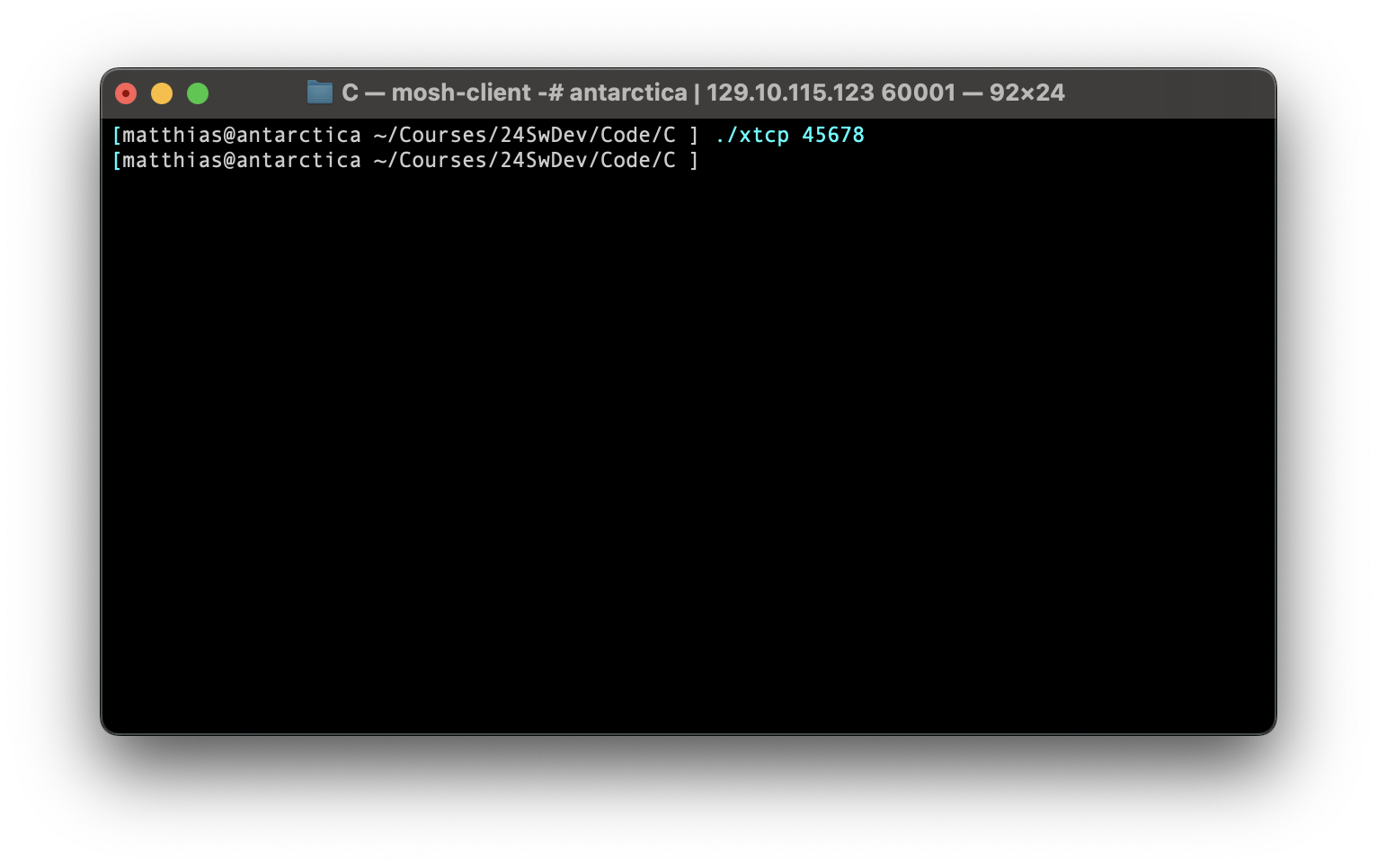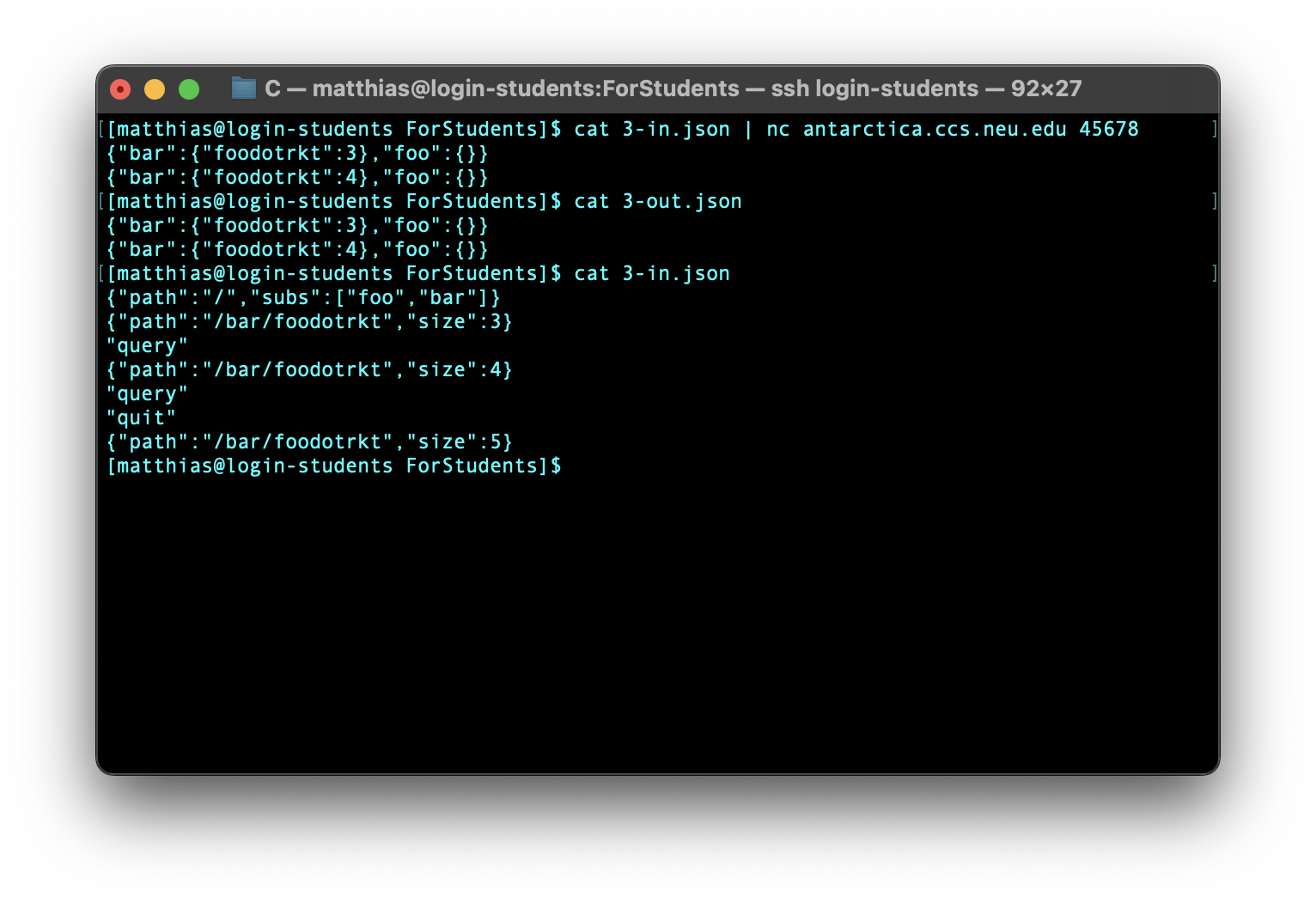C —
Due Thursday, 19 September 2024, 11:59pm
Purpose T to explore the TCP libraries of the chosen programming language and S/T to reflect on the language of your choice
The product of this course is going to be a simple distributed software system, meaning its components run on different computers around the “world” and communicate somehow. Communication requires a “transport protocol.” This course uses just a basic touch of TCP, a general (and old) protocol. The milestones will include the design and implementation of a logical protocol based on JSON, not unlike the one used here.
Self-Evals Starting with this homework assignment, we will push a
self-evaluation form into your homework repo (C/self-eval.md) right after
the due date/time. The form comes with instructions and a small number of
questions about your code base. You must edit the file—
Not submitting a self-evaluation by this deadline will lower your score substantially.
Delivery You must deliver xtcp and Tests/ in a directory called C in your repository.
All auxiliary files must be put into a sub-directory called C/Other/.
Task Develop xtcp, a TCP server program. It permits a single client to connect. It then processes a stream of JSON values on this TCP connection. The stream can be arbitrarily long and there can be arbitrary delays between the arrival of the separate JSON values.
When a JSON value arrives on the input side, xtcp acts on them
according to the specification of A —
The program takes one command-line argument, an integer between 10000 and 60000 (inclusive). This argument specifies the port on which xtcp accepts connections. (There is no need to validate this number.)
Reuse Since the program’s functionality is the same as that of xjson
from A —
Tests Create one test for xtcp in the directory
Tests/. You may re-use the validated test from your solution for A —
Constraint No test file may exceed the size limit of 40Kb.
Remote Connection
[login-students] $ nc antarctica.ccs.neu.edu 45678 |
The nc command sends JSON values from login-students to antarctica.ccs.neu.edu, one at a time. The server responds with the expected results as the remaining file-display lines (cat) show.
You can also run these commands on the same machine, using two terminals, which will mimic the workings of our test harness. Since many of your friends may try this at the same time on login-students, pick a random port number between 10000 and 60000 so you don’t interfere with each other. If all of you use the same port on the same computer, bad things will happen.
Netcat vs netcap
There exists a whole family of netcat programs.
The one on the Linux servers is nmap netcat and it satisifies all of our needs.
Macs may vary; mine had the nmap netcat preinstalled via the developer toolkit.
On Windows it is likely not pre-installed. Windows users may wish to visit the nmap site, download the ncat executable, and add it to their paths.
If your machine has the OpenBSD version installed, you may need to use the -N command-line option.
Language Switch
Now that you have completed all exploratory programming tasks, you should reflect on your experience with your language and its tools. Here are some sample questions you may ponder, especially with respect to the (rather short and compact) solution that the instructors showed you in class. (1) What problems did you encounter with [the libraries of] your chosen language? (2) How easy was it to write unit tests? Run them? Check expression coverage? (3) Did the chosen IDE support the programming well? (4) In which way will the desired language fix the above problems? (5) How much time did it take to accomplish the exploratory tasks given how short the programs should be.
Once you have answered these questions for yourself, honestly ask yourself whether you still think the language is a good choice for a project that involves the explored aspects (and more).
If you wish to switch languages, write down a rationale: why you no longer like your TAHBPL (the above questions may be a guide); how you expect your alternative TAHBPL to remedy the diagnosed problems. Half a page per negative response suffices. Less is more. Address the memo to your section instructor, send it to him, and make an in-person appointment. CC the tech TA.

